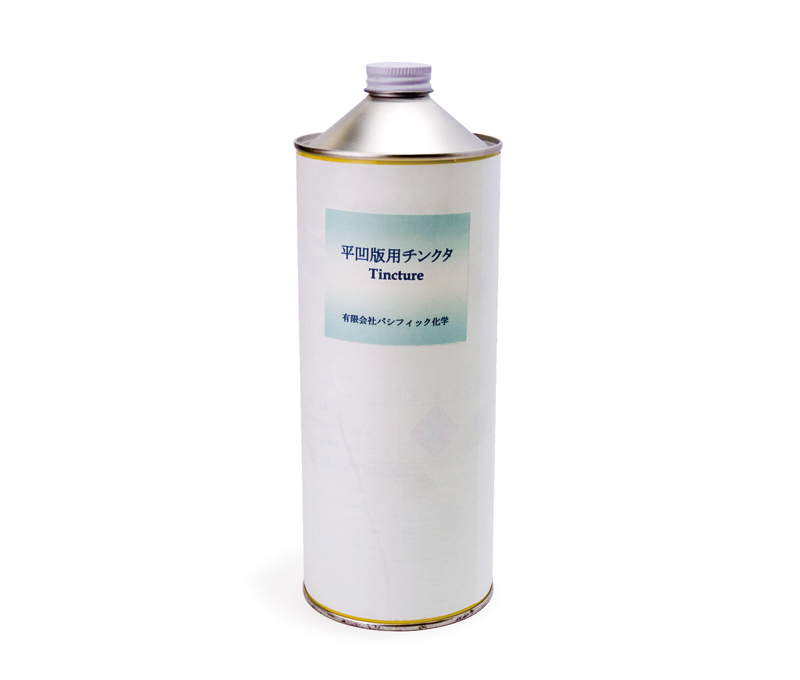Tincture
チンクター
Tincture
CATEGORIES
Tincture is a liquid produced by dissolving powdered asphalt, grease, beeswax, etc. in solvent such as turpentine, and is used to reinforce the oil content of the drawing when making metal lithograph plates.
Tincture contains a lot of fat. Replacing the drawing done in lithographic crayon or tusche with tincture reinforces the oil content and helps it to hold ink better during printing. This process is referred to as tincture replacement. Tincture replacement is carried out in the following platemaking process. After drawing the image, the plate surface is coated with a platemaking solution, wiped with a dry cloth and left to dry for half a day. Next, print cleaner is used to remove the drawing material, and then platemaking lacquer is applied on the plate. Once the plate surface is completely dry, some tincture is poured over the top and spread out evenly with a dry cloth. The asphalt and the grease contained in the tincture attach themselves to the plate surface and improve its oil sensitivity. This should be carried out with care if crayon or tusche was used to draw an image with fine tones because applying tincture will widen the lines and produce darker tones when printed. Tincture is also sometimes used as a drawing material to draw directly on the plate surface. It is also applied directly on the plate surface when producing a solid printing plate.
Tincture has been produced domestically in Japan for many years but because its production was once temporarily suspended, a German product called “protection ink” came to be used in its place. However, protection ink is no longer imported today because a new tincture manufacturing company was set up in Japan. Tincture can be purchased at art supply stores that handle printing supplies.

